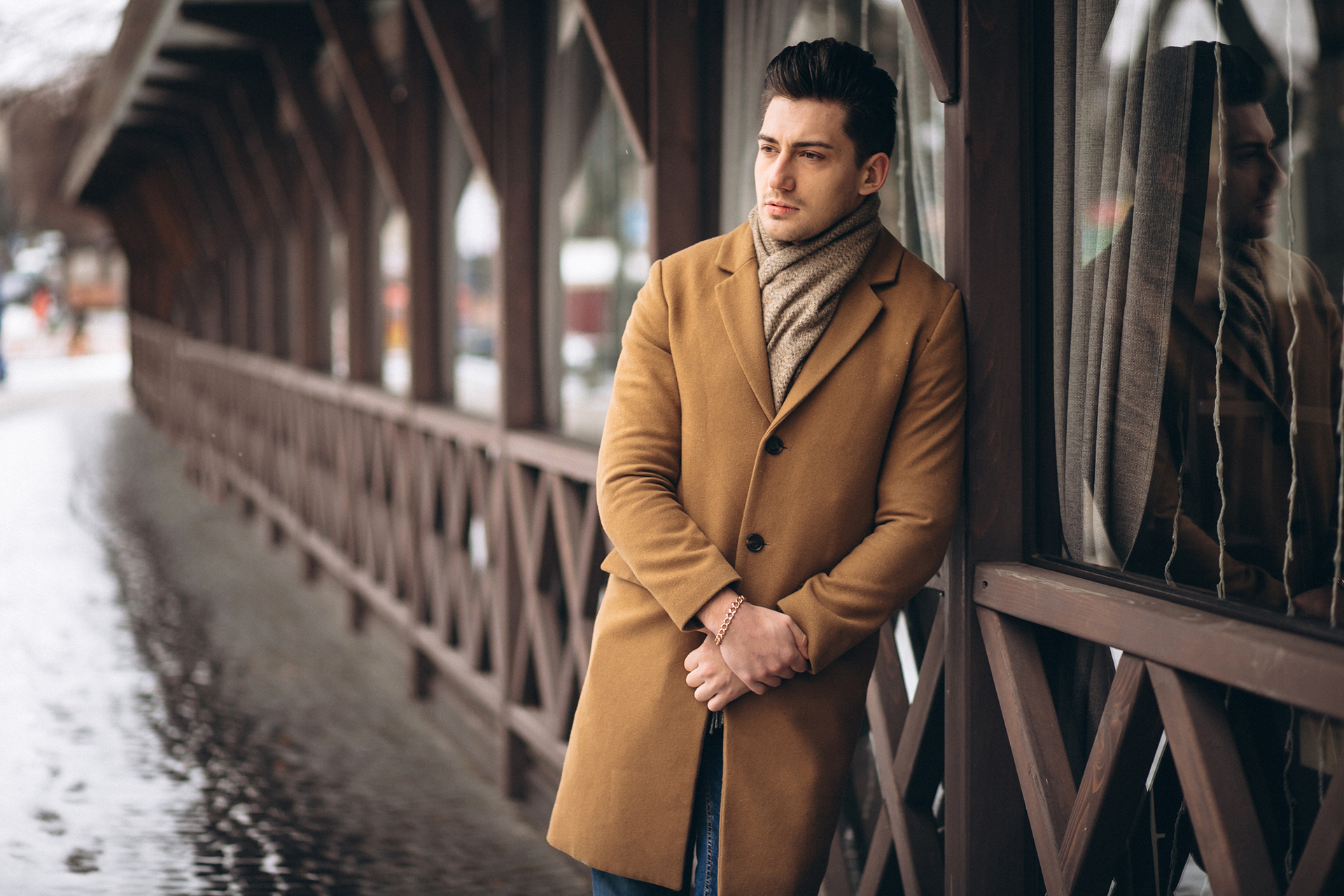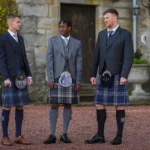
Man in coat outside
Welcome to the fascinating journey through the historical and cultural tapestry of coats — garments that have transcended mere protection from the elements to become powerful symbols of style, identity, and innovation. From the ancient origins of tailored garments in Greece and Rome to the runway debuts of contemporary fashion shows, coats have woven themselves into the fabric of human history. In this exploration, we delve into 25 intriguing historical facts and numerical trivia about coats, unraveling stories of iconic designs, influential figures, and the evolution of outerwear through the ages. Join us as we unfold the layers of history, shedding light on the rich narratives behind these essential and transformative pieces of clothing.
Ancient Origins: The concept of a coat traces its roots to ancient civilizations, notably the 3rd century BCE, where tailored garments were prominent in both Greek and Roman societies. In these early cultures, clothing served not only as a practical necessity but also as a symbol of social status and identity. The evolution of these early coats laid the foundation for the diverse and culturally significant outerwear we see today.
Togas in Ancient Rome: In ancient Rome, togas were a distinctive and essential part of the attire worn by citizens. The toga was a large, semicircular piece of cloth draped over the body, and its style and color denoted the wearer’s social class and status. This traditional Roman garment, with its elaborate folds and ceremonial significance, reflects the importance of clothing as a marker of societal roles and distinctions in ancient civilizations.
Medieval Surcoats: The medieval surcoat emerged as a practical and symbolic garment worn over armor by knights. These sleeveless coats featured distinctive heraldic designs, allowing for easy identification on the battlefield. Beyond their utilitarian purpose, surcoats became a canvas for the display of intricate crests and symbols, showcasing the chivalric code and the importance of heraldry in medieval European society.
Pea Coat Origins: The classic pea coat has a fascinating origin rooted in naval history. Initially worn by European sailors in the 18th century, the term “pea coat” likely originated from the Dutch word “pije,” referring to the coarse wool used in the garment. This sturdy and warm woolen coat became a staple in maritime settings, protecting sailors from harsh weather conditions and exemplifying the fusion of functionality and style in historical outerwear.
Mackinaw Coats: The iconic Mackinaw coat has its roots in the late 19th century and is closely associated with the rugged lifestyles of loggers and outdoorsmen. Constructed from thick wool, often in a distinctive red and black plaid pattern, the Mackinaw coat provided warmth and durability in harsh environments. Its popularity highlights the practical considerations that often influence the design and adoption of specific types of outerwear throughout history.
Trench Coat Development: The trench coat, synonymous with sophistication and practicality, has a notable history rooted in World War I. In 1914, Thomas Burberry designed the modern trench coat for British officers, incorporating water-resistant gabardine fabric. This innovation not only protected soldiers from the elements but also contributed to the trench coat’s enduring status as a symbol of timeless style, blending military functionality with civilian elegance.
Coco Chanel’s Influence: Coco Chanel, a trailblazing figure in the fashion world, played a pivotal role in reshaping women’s attire in the 1920s. Breaking away from the constraints of corsets, Chanel introduced stylish and practical coats that liberated women’s fashion. Her designs emphasized comfort and simplicity while maintaining a sense of sophistication, leaving an indelible mark on the evolution of women’s outerwear.
The Duffle Coat: The duffle coat, recognized by its distinctive toggle fastenings, has a unique origin in Belgian and British military wear. Initially worn by the British Royal Navy during World War II, the duffle coat’s design, featuring a hood and sturdy construction, contributed to its popularity as a practical and enduring outerwear choice, particularly in cold and damp climates.
Burberry’s Nova Check: The iconic Nova Check pattern, associated with the luxury brand Burberry, made its debut in the 1920s. This distinctive plaid design became synonymous with the Burberry trench coat and represented a fusion of classic British style and innovation. The Nova Check pattern remains an enduring symbol of the brand’s heritage, illustrating the power of a recognizable pattern in shaping the identity of a fashion house.
The Pea Coat in the U.S. Navy: The adoption of the pea coat as part of the U.S. Navy uniform in the early 20th century solidified its status as a classic garment. The pea coat’s design, featuring a double-breasted front and large lapels, not only provided warmth but also conveyed a sense of naval tradition and authority. Its continued popularity beyond military contexts underscores the enduring appeal of functional and well-designed outerwear in civilian fashion.
Cashmere Coats: In the mid-20th century, cashmere coats gained prominence, introducing a touch of luxury to outerwear. Cashmere, derived from the fine undercoat of cashmere goats, became a sought-after material for its softness and warmth. The integration of cashmere into coat designs showcased a shift toward elegance and sophistication in the fashion industry, emphasizing both style and comfort.
Cultural Impact of Trench Coats: Trench coats, originally designed for military use, experienced a cultural transformation in the mid-20th century. As film noir gained popularity, trench coats became synonymous with detectives and mysterious characters, exemplified by Humphrey Bogart’s portrayal of Rick Blaine in “Casablanca.” The cinematic association propelled the trench coat into the realm of iconic and stylish outerwear, transcending its military origins.
Couturier Charles Worth: Charles Frederick Worth, a 19th-century English designer based in Paris, earned the title of the first couturier. Worth revolutionized the fashion industry by introducing the concept of haute couture, where garments were individually tailored for clients. His influence extended to various clothing types, including coats, marking a significant shift from standardized clothing to personalized and high-quality fashion.
Max Mara’s Camel Coat: In 1981, the Italian fashion house Max Mara introduced the iconic camel coat. Renowned for its timeless design and use of camel hair, this coat became a symbol of understated luxury. Max Mara’s camel coat exemplifies the enduring appeal of classic and well-crafted outerwear, transcending fleeting trends and becoming a staple in many wardrobes.
The Puffer Coat Boom: The late 20th century witnessed the rise of the puffer coat, featuring synthetic insulation for enhanced warmth. Initially designed for outdoor activities, the puffer coat’s practicality and comfort led to its widespread adoption as a fashionable winter staple. Its popularity reflects the intersection of performance and style in contemporary outerwear.
Introduction of Gore-Tex: In 1969, the introduction of Gore-Tex marked a revolutionary moment in outerwear technology. This waterproof and breathable fabric significantly enhanced the functionality of outdoor and raincoats, providing a durable barrier against the elements. Gore-Tex’s impact underscores the importance of innovation in materials and construction methods in shaping the performance capabilities of modern coats.
Burberry’s Rebranding: In the 2000s, Burberry underwent a notable rebranding strategy to reclaim its heritage and prestige. The brand shifted focus to its iconic trench coat and reintroduced the classic Nova Check pattern. This strategic move successfully revitalized Burberry’s image, demonstrating the brand’s ability to balance tradition with contemporary appeal and cementing its status as a global luxury fashion house.
Lab Coats in Medicine: The white lab coat has been a symbol of authority and professionalism in the field of medicine. Adopted in the late 19th century, lab coats serve practical purposes, such as protecting clothing from contaminants, while also conveying a sense of trust and expertise. The standardization of lab coats in medical settings reflects the importance of a uniform and recognizable garment in establishing credibility and hygiene.
Military Influence on Fashion: Military-inspired coats, featuring distinctive elements such as epaulets and double-breasted designs, have consistently influenced civilian fashion. The functionality and durability inherent in military outerwear have translated into stylish and enduring trends, showcasing the enduring impact of military aesthetics on the broader fashion landscape.
The Trench Coat in Film: Trench coats have played a pivotal role in the world of cinema, especially in film noir. The association of trench coats with detectives and mysterious characters, exemplified by iconic portrayals like those of Humphrey Bogart, has contributed to the enduring allure of this outerwear style. The trench coat’s cinematic presence transcends its utilitarian origins, adding an element of intrigue and sophistication to characters on the silver screen.
The Length of a Trench Coat: Classic trench coats traditionally fall just below the knee, striking a balance between style and practicality. This specific length provides ample coverage against the elements while allowing for ease of movement. The knee-length design has become a hallmark of trench coats, contributing to their versatility and making them suitable for both formal and casual occasions.
Fashion Show Debuts: The concept of fashion shows, where designers showcase their latest creations on the runway, has a rich history dating back to the 19th century. Charles Frederick Worth is often credited with hosting the first official fashion show in Paris. Since then, fashion shows have become integral to the industry, serving as platforms for designers to unveil their collections and set trends for the upcoming seasons.
Coats in Art: Coats have been significant subjects in art throughout history, reflecting cultural norms and societal values. Paintings featuring individuals in various coat styles provide insights into the fashion of different eras. Artists have used coats as both functional elements and symbolic representations, capturing the evolving relationship between clothing and identity across different periods and artistic movements.
Sustainable Coat Initiatives: In recent years, the fashion industry has witnessed a growing emphasis on sustainability. This shift has led to initiatives focused on using eco-friendly materials, ethical production methods, and promoting longevity in garment use. Sustainable practices in coat manufacturing aim to reduce environmental impact and address concerns about the industry’s contribution to waste and pollution.
Record-Setting Auction Prices: Vintage and iconic coats have become sought-after collector’s items, fetching significant prices at auctions. The market for historical and culturally significant outerwear has grown, with notable examples including the auction of a trench coat worn by Audrey Hepburn in “Breakfast at Tiffany’s.” Such high-profile auctions highlight the cultural value attributed to certain coats and the enduring fascination with iconic pieces in fashion history.









